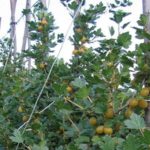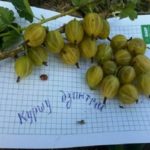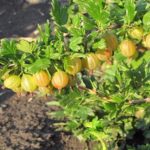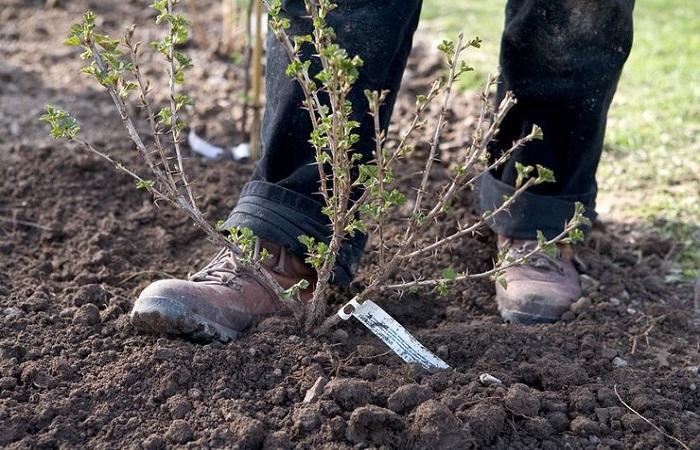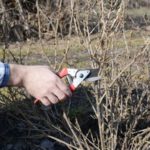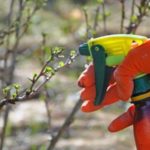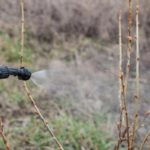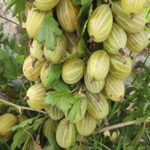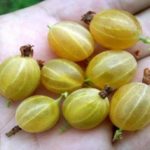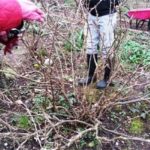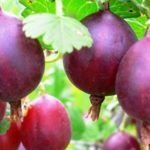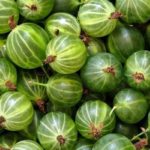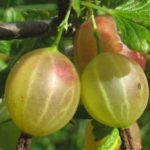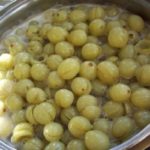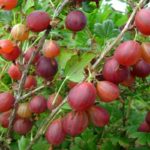The yellow gooseberry variety Kuršu Dzintars was obtained in Latvia from the Sterna Ražiga and Pellervo varieties. It is popular among gardeners due to its early ripening period. Let's consider the characteristics of the Kursu Dzintars gooseberry, the advantages and disadvantages of the variety, agricultural cultivation techniques, how to plant seedlings and care for them. How to prepare plants for winter, how to propagate. How to properly harvest and store crops.
Description and characteristics of the Kurshu Dzintars variety
The Kuršu Dzintars variety ripens in the average time for a crop; the berries can be collected from the 3rd decade of July. Gooseberries have a good taste of berries, the weight of which is approximately 3 g. The shape of the berries is round, the color is amber-yellow, the skin is thin. The pulp is aromatic, pleasant to the taste, and sweet. The fruits can be stored well and can be transported. Productivity per plant is 4-6 kg. The fruits can be consumed raw or processed.
The gooseberry bush is of medium height, not spreading, there are thorns on the straight shoots. The leaf is dark green, matte, pubescent on the underside. This is a partially self-fertile variety; it is necessary to plant pollinators nearby. Cross pollination not only increases yield, but also improves the taste of the fruit. It blooms in mid-May, ripens in late July, early August. The variety has high cold resistance, as well as resistance to powdery mildew.
Advantages and disadvantages
Advantages of Kurši Dzintars gooseberries:
- unpretentiousness to climatic conditions;
- cold resistance;
- durability - grows in one place for up to 30 years;
- resistance to drought and frost (up to -30 ºС);
- stable fruiting;
- productivity;
- simultaneous ripening of fruits;
- the berries do not fall off and stay on the branches;
- the fruits do not wrinkle during transportation.
Disadvantages: berries become smaller due to lack of moisture.
Gooseberry agricultural technology
Kursu Dzintars, in general, is an unpretentious variety. But it is still necessary to follow the rules of agricultural technology in order to provide the plant with abundant nutrition and growing conditions.
Landing
Gooseberry Kuršu Dzintars grows well in sunny areas; when placed in the shade, it produces small berries in small quantities. It grows poorly in damp places; if over-watered, the roots can rot. Does not like clay soil.
Loosening and weeding
Loosening is carried out after watering or rain. You need to loosen the ground under the bush, in the area occupied by the shoots. All weeds should be removed not only inside the bush, but also near it. You can spray the soil with herbicides and lay down mulch to make regular plant care easier.
Watering
During a drought, at least a bucket of water is poured under an adult gooseberry bush 2 times a week. If the plants do not have enough moisture, they may lose their ovary or the berries will be small. Lack of moisture has a bad effect on young shoots; they can dry out and freeze in winter.
Trimming
Gooseberries are pruned in spring or autumn, before and at the end of the growing season. Shoots that bear fruit, are dry, rotten, or damaged by diseases and pests are cut out. You need to cut out healthy ones too; if they are unnecessary, the bush is thickened. Burn the shoots and use the ash as fertilizer.
Top dressing
The bushes are fed in the spring, before buds open, after flowering and when the berries reach half their size. For the first time, you need to use nitrogen fertilizers, manure infusion, humus, then apply fertilizers with a predominance of phosphorus and potassium or ash. The volume of fertilizers is a bucket of humus per plant and 1-2 kg of ash.
Wintering
After pruning, the root zone is covered with a layer of mulch of at least 10 cm; if the winter is expected to be cold, the layer should also cover the lower parts of the branches. Instead of natural materials, you can use agrofibre, with a cover from which you need to cover the entire bush.
Treatment against diseases and pests
During rainy seasons, the likelihood of berries rotting greatly increases; they are covered with a coating of fungi even before ripening. Without treatment, you can lose a significant part of the crop. The solution to the problem is to spray with fungicides at least 2 times before harvesting. The last treatment must be carried out taking into account the waiting period specified by the manufacturers for the drug.
Features of reproduction
Kursha Dzintars are propagated mainly by layering. Young, healthy and strong shoots, without being separated from the bush, must be placed in trenches and covered with earth. Cut off the top of the shoot to stimulate branching. During the summer, water along with the bush. By autumn, roots will form on the sprinkled area. In the fall or next spring, dig up and transplant into a garden bed.
Harvest and storage
The berries are collected fully ripe or slightly unripe, depending on the purpose of use. The ripe ones are used for food and jam, while the slightly unripe ones are used to make compote and sent for storage. Gooseberries are stored in the refrigerator in perforated bags or plastic containers.
In order for them to last longer, the berries must be selected clean, without damage, with stalks. Like any berries, gooseberries can be frozen or ground in a meat grinder and mixed with sugar. Store the preparation in the refrigerator.
The Kurshu Dzintars variety is valuable for its unpretentiousness, cold resistance, constant fruiting, and productivity. It is loved for the versatility of using berries, their suitability for processing and transportation.

